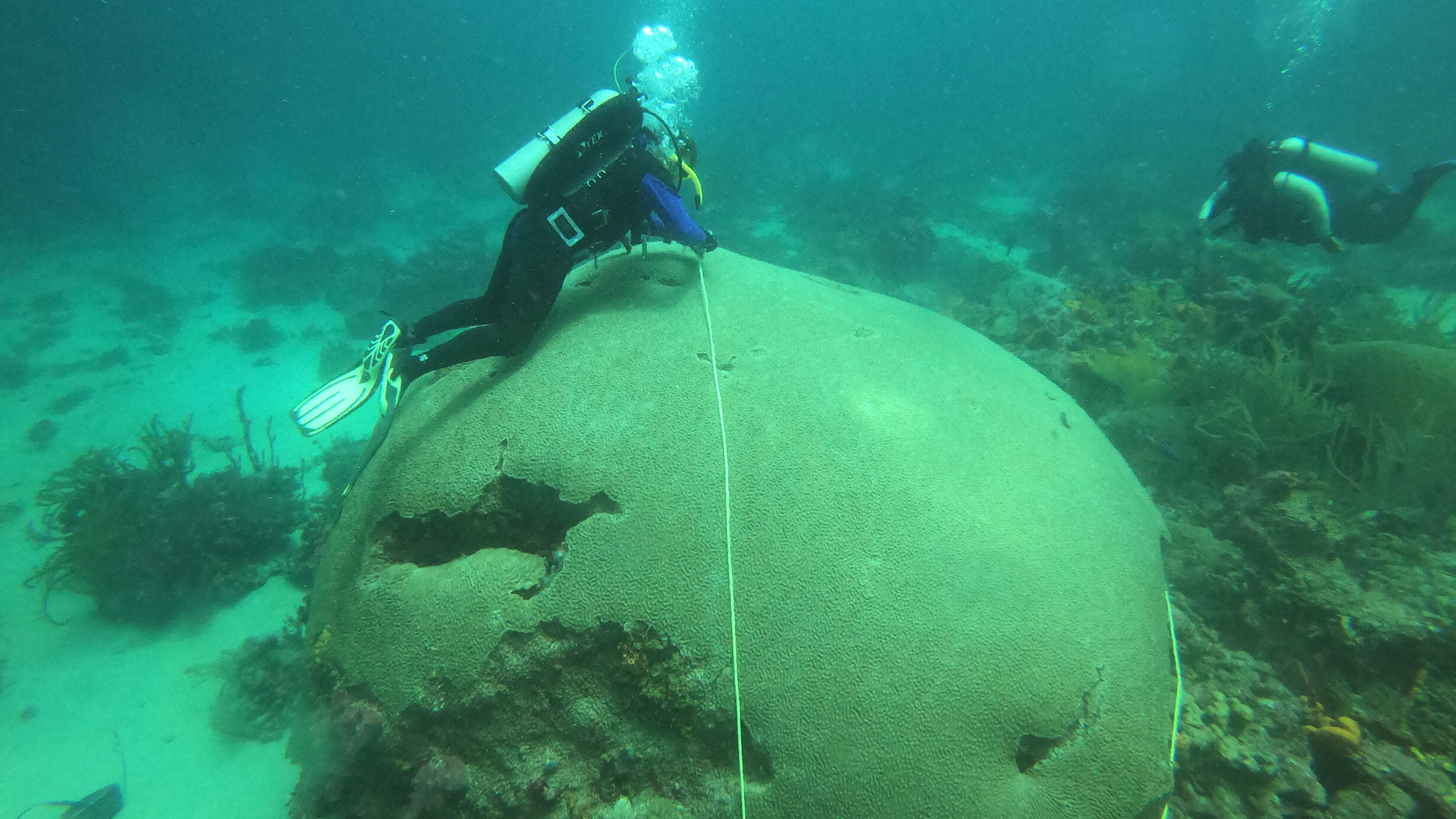Frontiers Lecture: Unlocking Climate Data in Corals
Part of Frontiers Lectures
Thursday, April 22, 2021
Part of Frontiers Lectures
Thursday, April 22, 2021

This month's Frontiers Lecture is presented as part of EarthFest, the Museum's annual celebration of Earth Day.
Join us for a special Earth Day edition of the Museum’s Frontiers Lecture series with Museum Curator Dr. Nathalie Goodkin as she unpacks how sea surface temperature, salinity, and ocean circulation systems change over time and are critical to forecasting climate in the future.
Today’s climate is driven by the Earth’s ocean conveyer belt, which moves water from the tropics to the poles and through ocean basins. The only point of tropical water exchange on the planet occurs through the Maritime Continent, which spans from East Asia to Australia and consists of several archipelagos and shallow seas. Our knowledge of this region is limited by scarce instrumental data despite its importance in heat transfer and monsoon formation.
But there is another way to peek into the climate past. Find out how marine geochemists like Dr. Goodkin use a surprising hydrographic data repository in corals to gain insights into climate activity over seasons and decades, even hundreds of years.
Meet the Presenter
Dr. Goodkin’s research is focused on understanding and using coral geochemistry to reconstruct ocean-atmosphere interactions, climate behavior, and pollution histories over the past 500 years. Her team uses paleoclimate proxies in coral skeleton (e.g., stable isotopes) to reconstruct the climate of the last 500 years. The group utilizes coral skeletons as recorders of environmental conditions, providing insights into climate behavior on seasonal to decadal time scales. Dr. Goodkin strives to improve our understanding of the influences biological calcification on chemical fossils to improve the reliability of biogenic carbonate reconstructions.
In the past five years, Dr. Goodkin has focused on understanding how changes to mean sea surface temperature, salinity and circulation interact with the Southeast Asian Monsoon system. As warm water from the Pacific Ocean is pushed through the marginal seas of Southeast Asia towards the Indian Ocean, heat is transferred from the ocean to land driving precipitation patterns. Understanding how these systems have changed and interacted in the past will be critical to predicting climate in the future.
Stay in the loop for more upcoming events—sign up for our newsletter.
Support for Hayden Planetarium Programs is provided by the Horace W. Goldsmith Endowment Fund.